Attendance was sparse but information was plentiful at an April 3 public meeting regarding the proposed solar energy project at Greene County schools.
School superintendent Brett Abbotts used 21 slides to make the case for a $4.3 million solar project.
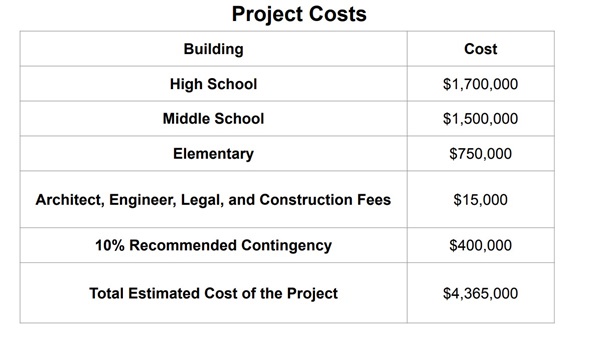
He estimates the project could save the district as much as $237,000 annually, compared to the current cost of electricity for the three buildings.
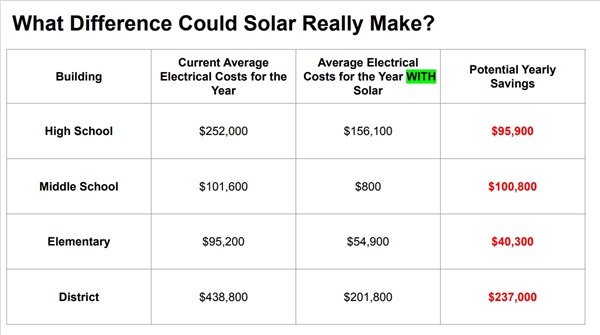
He has consulted with Red Lion Renewables of Norwalk and Atwood Electric Inc of Sigourney for panel placement and cost estimates for the project.
Solar panels would be installed on the ground at the high school and middle school. Cost of fencing around the arrays is included in the project cost. A solar-charged battery would be part of the middle school installation, bringing the net energy cost at that building to less than $100 monthly. A battery system would not be practical at the high school because of the size of the building and the power demands of the career academy.
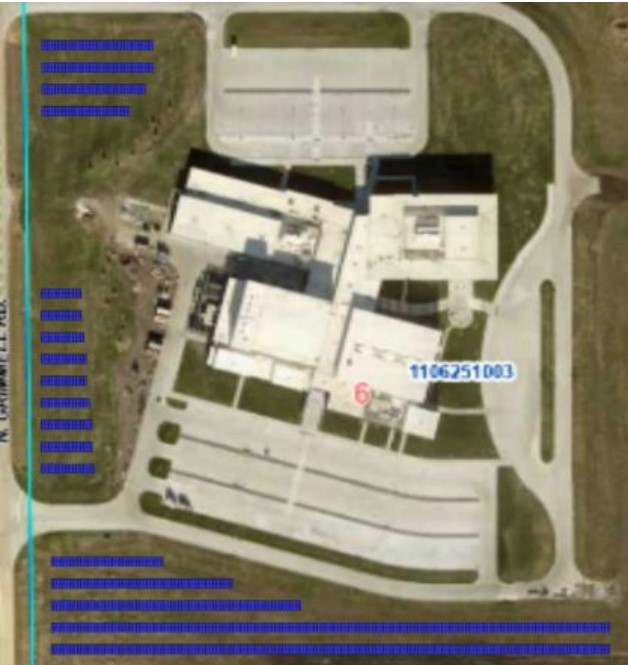
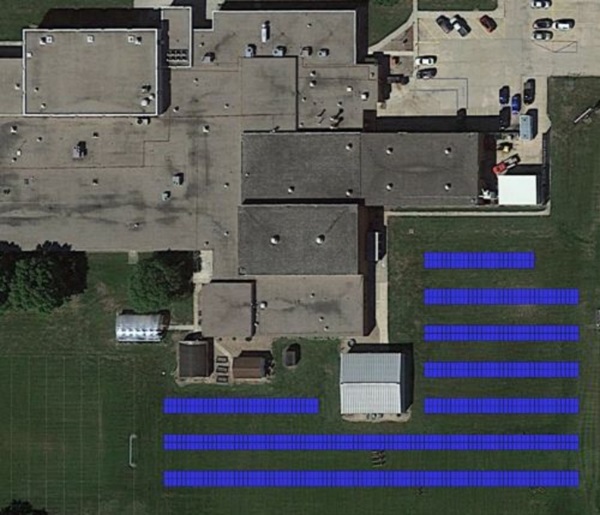
Panels would be mounted on the roof at the elementary school, with a ballasted system to minimize impact to the roof.
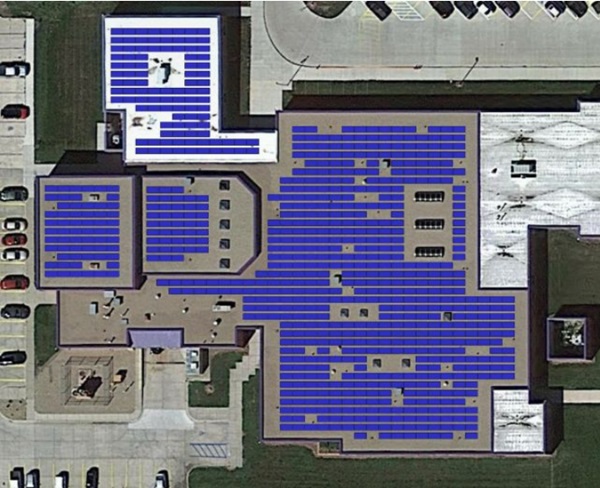
The project would be paid for by selling notes that would be repaid over 10 years from physical plant and equipment levy (PPEL) revenue. Abbotts said interest on similar notes is currently about 3.65 percent.
Additionally, the Inflation Reduction Act for Renewable Energy allows schools to take advantage of tax credits that range from 6 to 65 percent of the project cost. Both companies Abbotts has talked with have experience in gaining those tax credits, which would be available to the school district as a direct payment or subsidy payment.
The state of Iowa’s Energy Efficiency and Conservation block grant allows schools to apply for $50,000 to $600,000 in funding for solar projects.
Abbotts said he has already completed applications for those two funding sources.
Funds are also available through the Renew America’s School grant, part of the bipartisan infrastructure bill, and by obtaining recognition in the Leadership in Energy and Environmental Design (LEED). That program may be available if training in solar energy design or construction became part of the Career Academy program.
Completing agreements with Piper Sandler to place the PPEL notes and with Ahlers & Cooney to serve as bond counsel are on the board of education agenda for April 10.
The board would take action on accepting the bond placement at a May 20 meeting, and then complete other legal documents at the June regular board meeting. The district could have funds available by July 2, allowing the project to move forward.
Abbotts explained the district pays utility bills from the general fund, the same fund that covers educational costs and teachers’ salaries. PPEL funds cannot be used for general fund purposes, but using PPEL funds to reduce general fund costs, like utility costs, resulting in making more money available for educational purposes, is allowed.
